

What does a public servant from New Zealand, a COO of a skilled nursing facilities company from California and a hotel development manager from the UK have in common? Seemingly, not much at all. They all lead different lives and have different interests and hobbies. However, look closer, and you'll find one common thread: they all completed a 100-mile trek across the surface of a frozen lake in Northern Mongolia, slept in traditional nomad camps and endured the often battled subzero conditions. And those weren't even the most challenging parts of the journey.
I signed up for Rat Race's Mongol 100 (external link) last year during a prolonged heatwave in the UK. At the time, the idea of being in a calm, cool environment sounded like a dynamite idea. I was also slightly terrified of the commitment but thought I had plenty of time to prepare myself both physically and mentally. I'm a decent runner and don't mind the cold either; therefore, the Mongol 100 felt like the kind of thing I would be into.
In this article, I'll do my best to summarise the experience as well as to give advice and gear recommendations to anyone thinking about taking on the Mongol 100 or other multiday ultra challenges in the cold weather. Rat Race's events are somewhat different from other ultras as the emphasis is on the experience, not on what time you finish the race, and as a result, the gear I used might not be 100% suitable for other ultra races. That said, an insulated, lightweight sleeping bag that works at -22ºC in Mongolia should also work in other cold countries.
Training for the Mongol 100
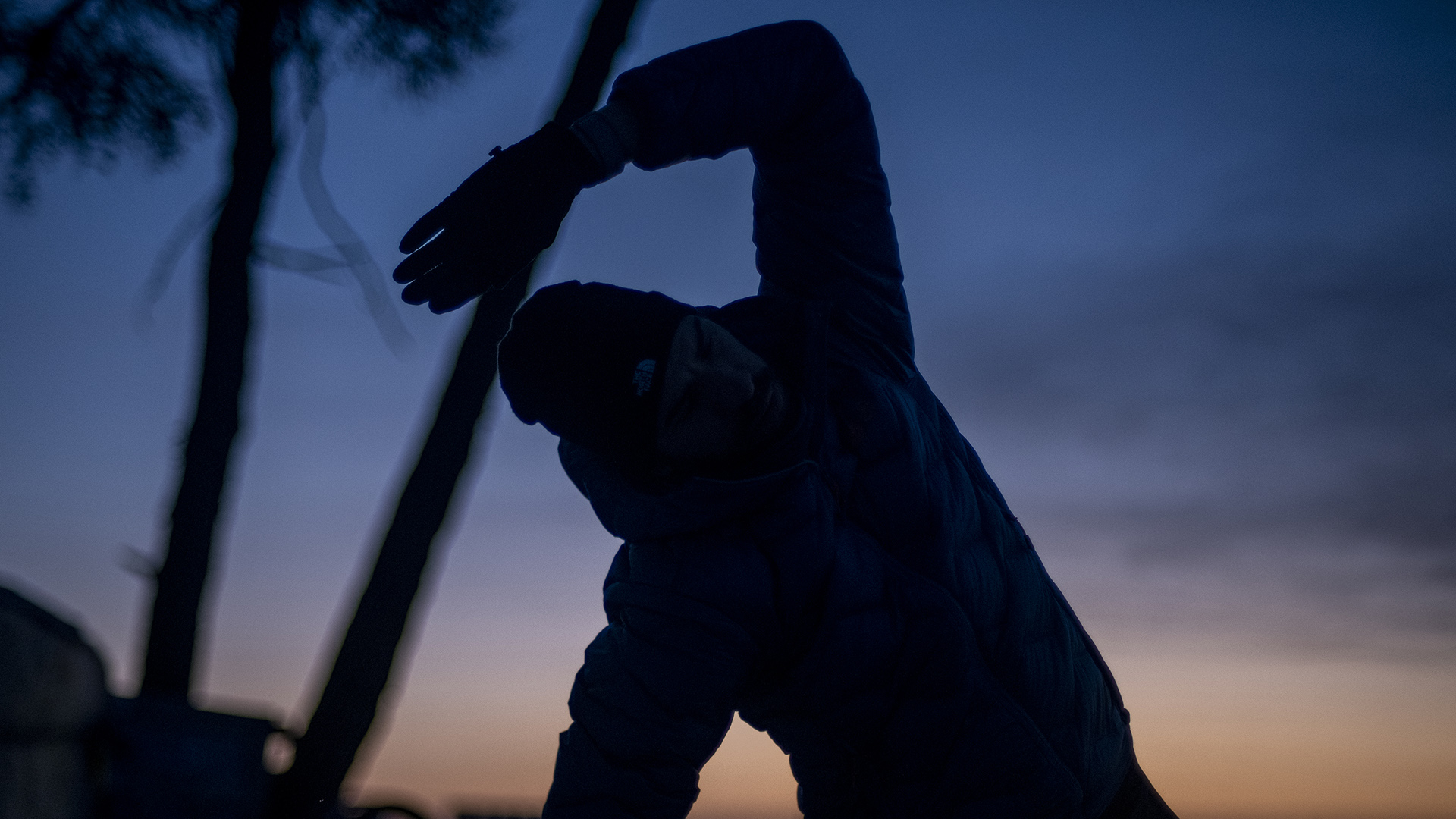
Most photos in this article were shot by the ever-so-talented Leo Francis
In hindsight, I was naive to think running that much on ice and trying to recover in traditional Mongolian gers was something I could prepare for in the UK. I’ve never done an ultra before, although I ran marathons, so I thought I had a decent base fitness level to work with. In my head, the Mongol 100 wasn’t a 100-mile ultra race; it was 16 consecutive 10k runs spread over four days – that didn’t sound too bad.
In terms of training, I didn’t go out of my way to do extra-long runs. The prep for the Mongolian excursion coincided with my London Marathon 2023 training, and I had plenty of long weekend runs planned as is. Because Rat Race events aren’t competitive, I felt I didn’t need to push myself crazy hard. As long as I can run 15-20 miles in one go, that should be enough.
I had a couple of training sessions wearing my day pack (more on what was inside this bag can be found in the gear section below), but other than that, I focused on putting in the miles every day (or almost every day). We had to wear spikes on the ice, but these weren’t full-on crampons but smaller nano-spikes that went over standard trail running shoes, so I wasn’t too concerned about getting used to them, either.
One thing I wish I had done more was stretching. Running on a hard surface like black ice for days is a lot for your joints. I’d recommend doing a lot of hip mobility exercises, especially IT band stretches, before such races (your IT band is a long ligament that runs from your hip to just below the outside of the knee. If you experience any pain on the outside of your knee, it’s likely to be an IT band issue).
Sign up to the T3 newsletter for smarter living straight to your inbox
Get all the latest news, reviews, deals and buying guides on gorgeous tech, home and active products from the T3 experts
A word (or two) about Mongolia
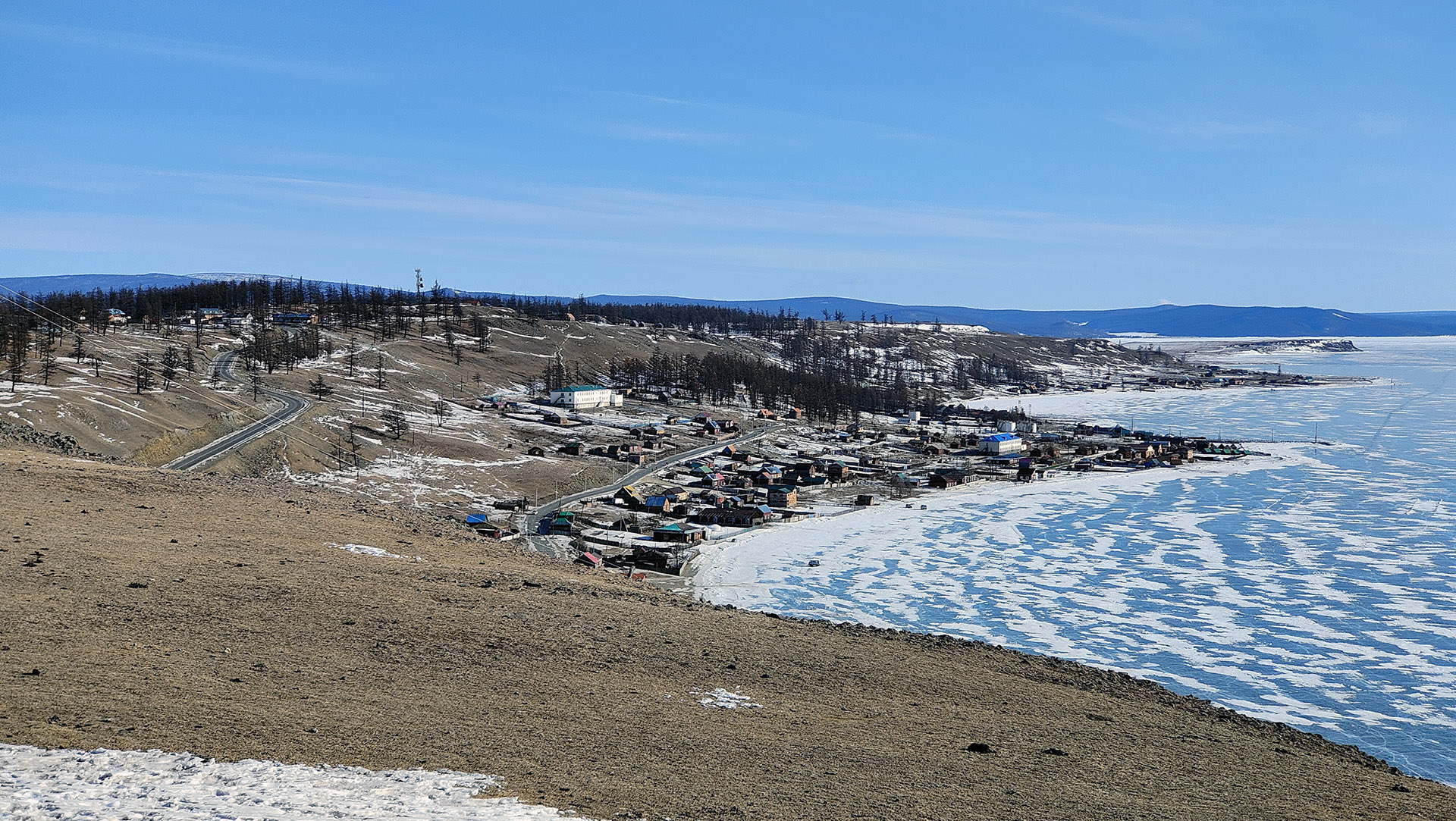
Mongolia looked surreal to my European eyes. Our trip from the capital to Lake Khövsgöl took 14 hours in one of the most sparsely populated countries in the world – imagine seeing nothing but mountain ranges, brown steppe and white snow for hours on end as you travel up the country. We had plenty of time to take in the scenery.
I’d recommend getting a tourist sim at the airport. A 10-day sim card with 10GB of data costs around £2.50 – a bargain. It’ll allow you to use social media, maps, and even call people at home. I had reception in most parts of the lake, which was a pleasant surprise. Money-wise, Mongolia is a cheap country, but the currency can be a bit confusing.
One British pound is around 4,000 Mongolian Tugrik, so it’s hard to do the conversion in your head when you buy things. For comparison, I had an amazingly-filling ramen lunch on the last day with a starter and a beer for around £9. There are ATMs at the airport, but they will ask you how much tugrik you need, so do the math before you draw the money out.
If you stay in Ulaanbaatar, this won’t be an issue, but water seems to be in short supply in most of the rural areas of Mongolia. When we were on the ice, we drank directly from the lake, as the water is crystal clear there (most of Mongolia’s fresh water supply comes from Lake Khövsgöl). Since we were out running or travelling all day, we ended up slightly dehydrated, which is something to consider.
The food was also interesting. We mostly ate our own expedition food when on the ice, but we were given cooked food in the permanent camps. It certainly wasn’t the case, but it felt like every dish had little bits of lamb in it, whether it was soup or porridge. We were served smoked whole fish, jam, butter and toast one morning.
If you’re a fussy eater, you might want to think about packing food items you like, as there aren’t many supermarkets in Northern Mongolia. That said, we stopped at a fantastic supermarket on the way to Mongolian Ujin Camp in Khatgal, our base south of the lake. Needless to say, vodka is very cheap and often rather tasty, too.
The gear I used and would recommend for the Mongol 100 (or any similar cold-weather adventures)
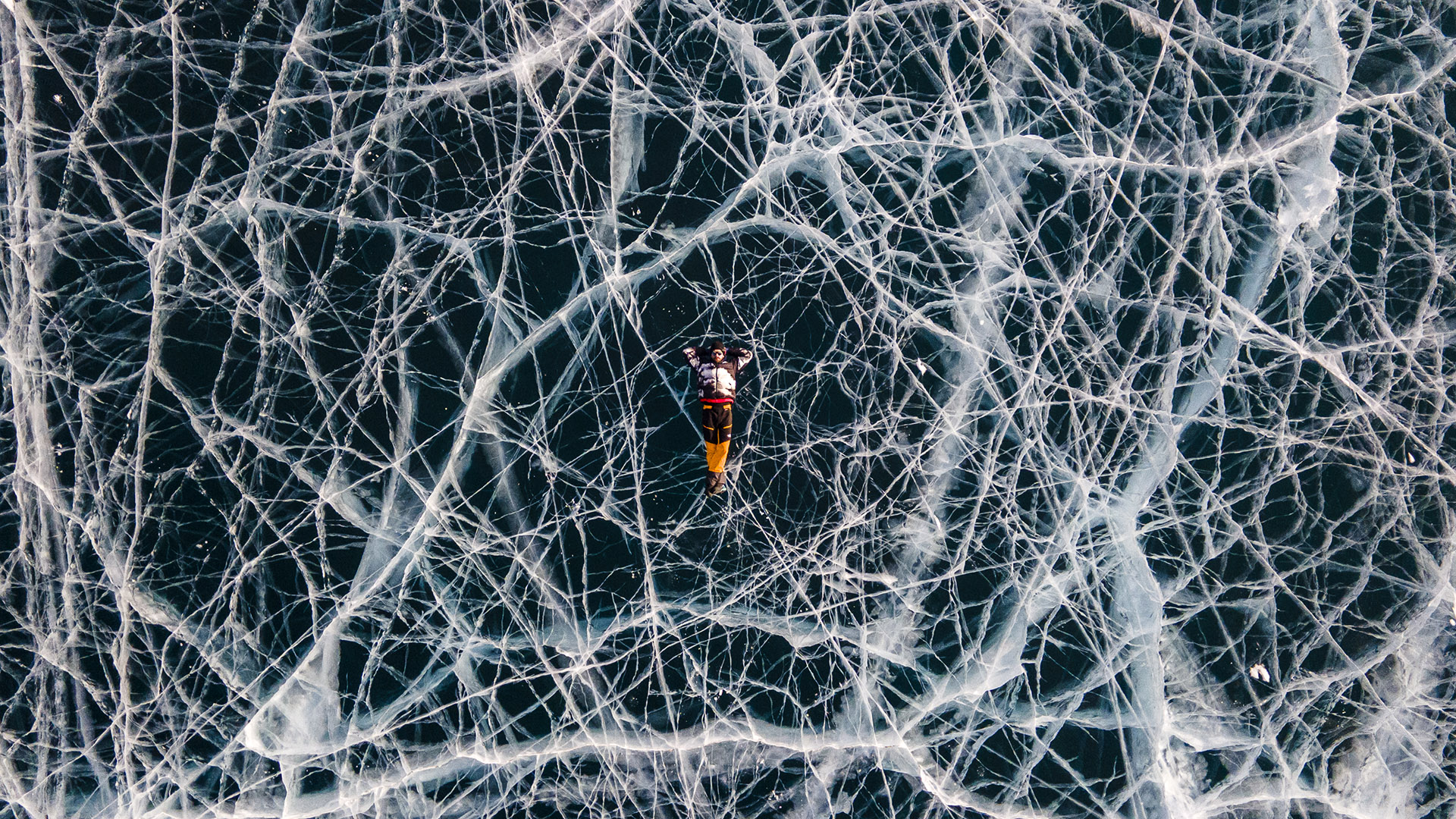
Rat Race provided us with an essential kit list prior to the Mongol 100, and we also had a dedicated kit check Zoom session before the event. The general recommendation was to take everything you think you might need because it’s unlikely you’ll be able to get – let’s say – a set of base layers in the middle of Lake Khövsgöl, should you need one.
That said, everyone in the group was happy to share their surplus gear, so there was no need to panic about forgetting a couple of things. I had some issues with my spikes, and many people offered their spare spikes for me to use. There was a strong sense of camaraderie in the group.
Below is a list of the gear I took with me. I consider all of them essential, apart from the down slippers, which weren’t needed on this occasion [Please note: I excluded emergency gear such as a whistle and a survival bag). I also took way too many socks, but since they fit in my bag, having them around wasn’t an issue. As a runner, what would have been nice to take was a pair of windproof running tights and a windproof running gilet. It wasn’t a massive issue, but I wish I had packed those. Anyhow, the gear list is as follows:
- Bags
- The North Face Base Camp Duffel – Small (main carrier; I'd recommend taking a much bigger bag)
- Matador Freerain28 Waterproof Packable Backpack (daypack)
- Footwear
- The North Face Summit Cayesh FUTURELIGHT Boots (camp and general use)
- TNF x Elvira Flight Series Vectiv Trail (running)
- Socks
- Smartwool Mountaineer Classic Edition Maximum Cushion Crew Socks (2x)
- Hoka Merino Trail Crew Sock (2x)
- Mountain Warehouse Explorer Mens Merino Thermal Socks (2x)
- Hoka Crew Run Sock (3x)
- Base layers
- Smartwool Classic All-Season Merino Base Layer Bottom
- Smartwool Classic All-Season Merino Base Layer Long Sleeve
- Mountain Warehouse Merino Mens Base Layer Top (2x)
- Mountain Warehouse Merino II Mens Pants With Fly (2x)
- TNF Summit Pro 120 Long Sleeve Top
- TNF Summit Pro 120 Leggings
- Trousers
- TNF Dawn Turn Hybrid Trousers (camp; general use)
- TNF RMST Mountain Trousers (running)
- Midlayer
- TNF Alpine Polartec Fleece 200 Jacket
- Jackets
- Jack Wolfskin Argo Peak Jacket (running)
- The North Face Nuptse Jacket (camp; general use)
- Mountain Warehouse Brisk Extreme Mens Waterproof Jacket (spare, in case of precipitation)
- Gaiters
- BUFF Merino Move Multifunctional Neckwear (2x)
- Sunnies
- Oakley Clifden (amazing stuff)
- Hats
- Smartwool Creek Run Beanie
- TNF Norm Shallow Beanie
- Bandit Running Classic Beanie
- Gloves
- TNF Etip Gloves (running)
- TNF Cragmont Gloves (general purpose)
- Animal Snowstorm Mens Snow Mittens (in case it got really cold, wasn't needed on this occasion)
- Spikes
- Kathoola Nanospikes (2x)
- Sleeping
- Thermarest Polar Ranger
- Thermarest NeoAir XTherm NXT sleeping pad
- Sea to Summit Thermolite Reactor
- Water bottle
- Camelbak Chute Mag Vacuum Insulated Stainless Steel Bottle
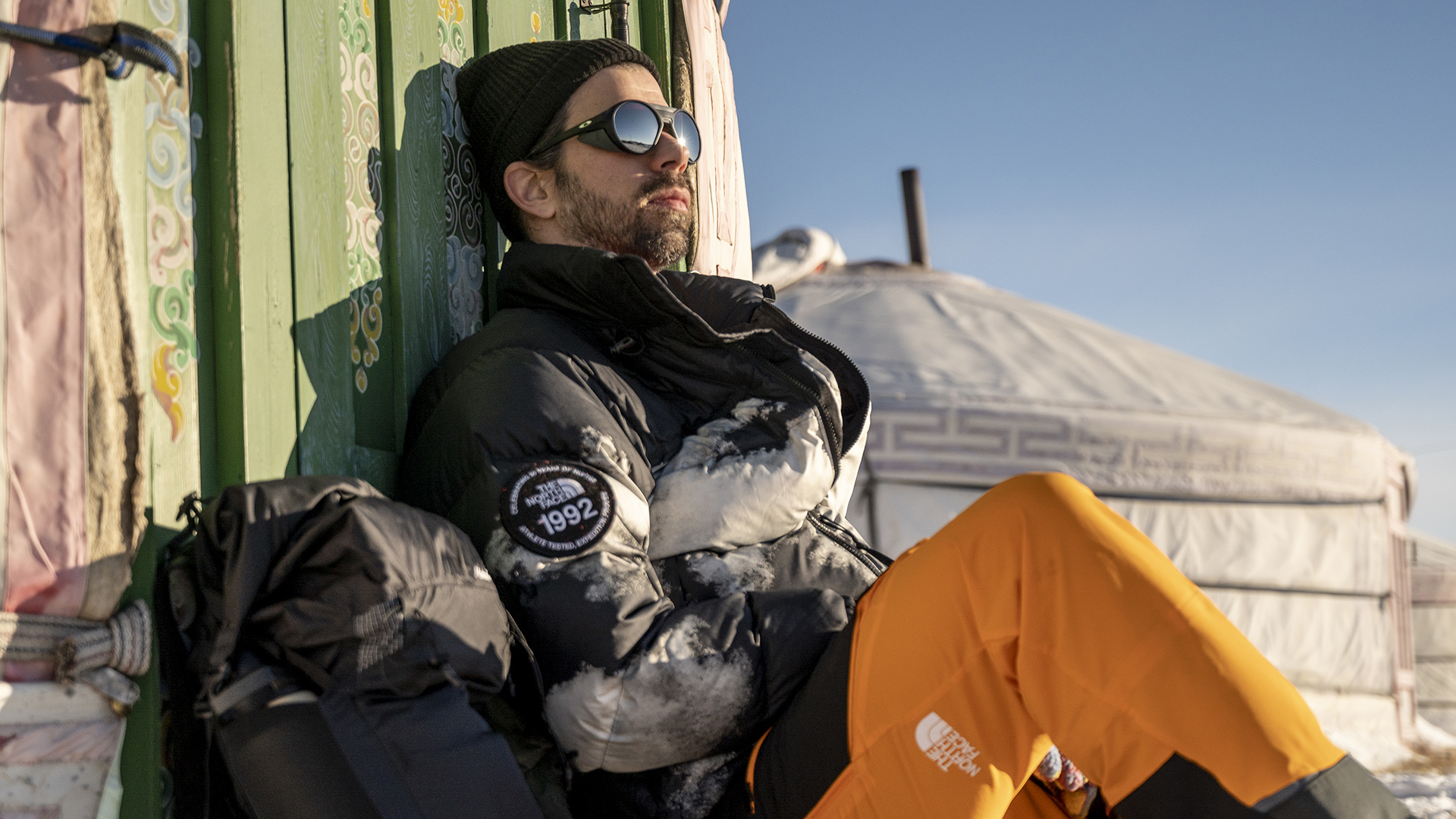
One of the most essential bits of the kit was the sleeping bag. Temperatures were sometimes as low as -20ºC, so we were recommended a sleeping bag with a comfort rating of -25ºC. I’m not a cold person, so I opted for the Thermarest Polar Ranger (all links in this section are retailer links), which has a comfort rating of -20ºC. It was unbelievably comfortable, especially coupled with the Thermarest NeoAir XTherm NXT sleeping pad—absolutely brilliant piece of equipment.
Another highlight for me was The North Face Summit Cayesh FUTURELIGHT Boots. These are for mountaineering and have semi-automatic crampon compatibility, BOA Fit System and Vibram Litebase Mont rubber outsole. I wore these all the time, apart from when I was running. I also had The North Face Nuptse Jacket with its 700 fill recycled waterfowl down to keep me warm in the camp.
Three more items to highlight were the Jack Wolfskin Argo Peak Jacket, which I wore for running. This extremely lightweight and toasty jacket kept my core warm without weighing me down, even when it was -22ºC on the first morning. Another essential item was the Matador Freerain28 Waterproof Packable Backpack. This was my day pack, and I just loved its versatility and resilience.
Finally, I was impressed with Camelbak Chute Mag Vacuum Stainless Steel Bottle. I couldn’t believe how well insulated it was; even when I left my bottle outside the ger for the night, the water inside was still warm in the morning.
The Mongol 100
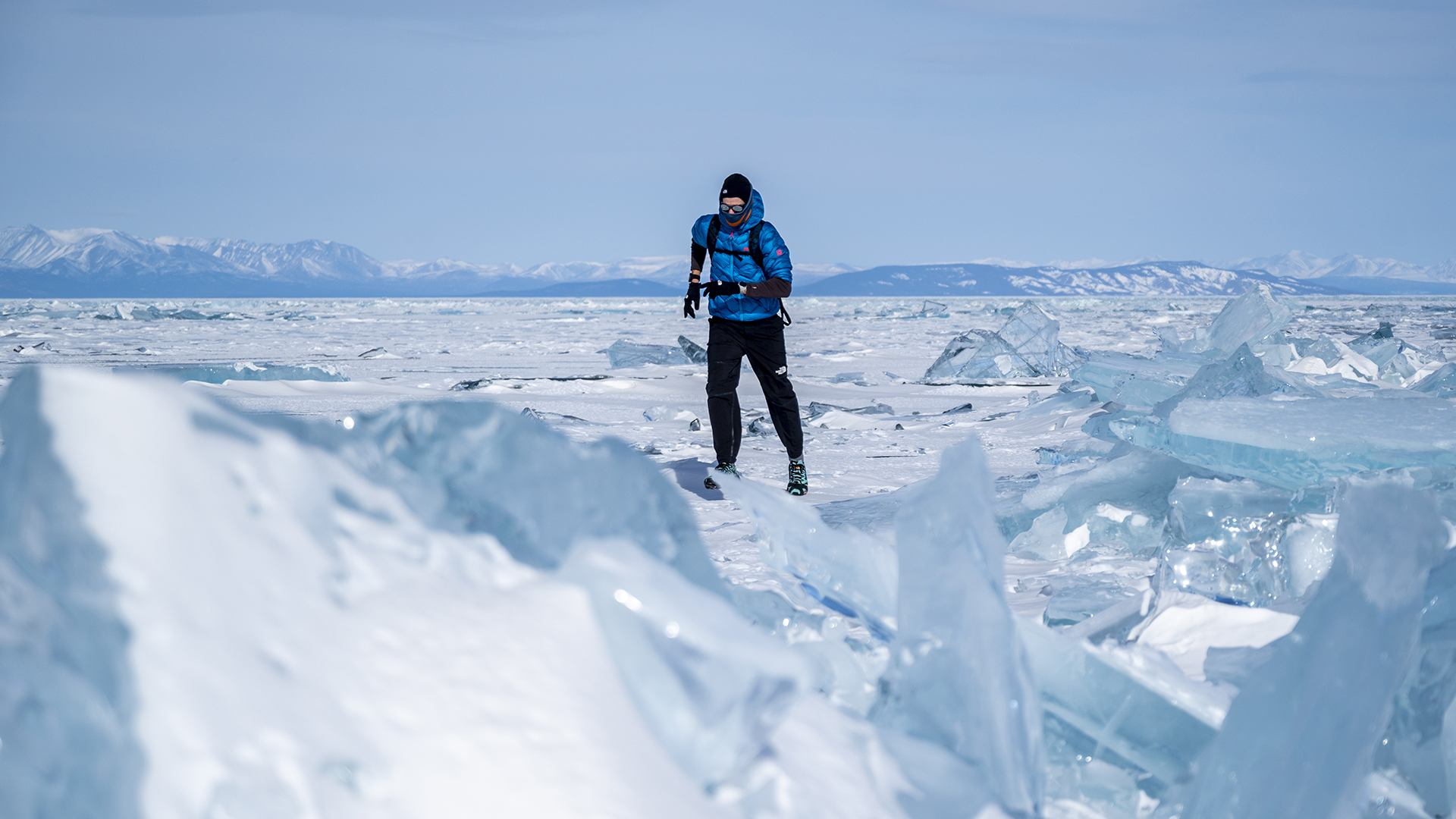
The Mongol 100 is one of the flattest ultra races due to the unique nature of the terrain. Since you’re running on the surface of a frozen lake, there is practically no elevation to speak of. There are seams to jump over, of course, where two large ice sheets collated, forming seemingly endless rough edges you have to go around.
Not having any elevation is as much of a curse as it is a blessing. Yes, you won’t have to battle uphill sections, which means the Mongol 100 is, at least to some extent, physically less challenging. However, being able to see miles ahead does take its mental toll on you. To put it in perspective, we could see the main island in the middle of the lake 50 miles away on day one of the race. Knowing it would take you two days to get there wasn't a pleasant thought.
This enhanced visibility provided yet more challenges. You could see waymarkers from miles away, which was frustrating and confusing. On the second day on the ice – admittedly one of the hardest days of the race – I could see two flags ahead of me with an aid station van in between. I also saw the cyclist – we only had of them – ahead of me going for the flags. From what I could tell, he should’ve turned left after the first flag to get to the van, but instead, he kept going for the other flag. Why?!
Worse still, after hitting the second flag, he kept going away from the van still, until finally, he took a sharp left turn and arrived at the van. I knew I had miles ahead of me before I reached the van, despite seeing the van in the distance. It felt like I was navigating an invisible maze.
There were a lot of things that motivated me to keep me going, though, such as the thought that if I finished among the top five men, I had the best chance to sleep in a ger without the snorers (no offence to anyone in particular; they can’t help it).
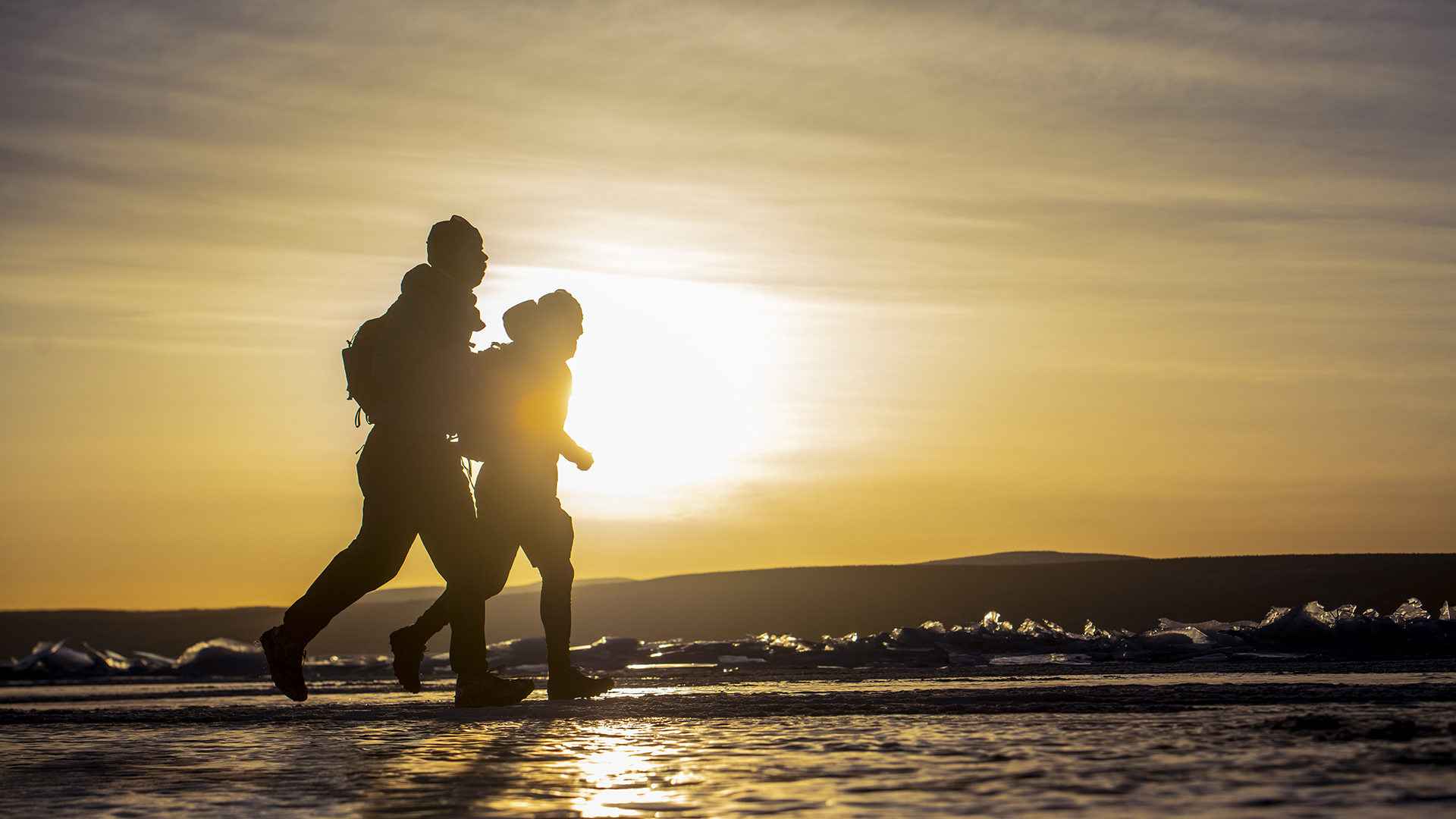
I ended up running at the front of the pack – not because I was keen to finish first, but because I wanted to keep time spent on the ice under six hours a day. I had a running partner, a seasoned runner from the South West, who I won’t name for obvious reasons. It was great to have someone around as we could talk to and push each other to keep going. It was nice to share this experience with someone on the ice, and by day four, we didn’t even have to discuss whether we should run together or not; we ran together from the start line.
It was also amazing to meet other people on the course. Some people got boosted – picked up by the van and dropped off at an aid station further ahead – while others, such as the skaters and the one cyclist, were faster because of their chosen means of transportation. It was so fun bumping into other participants at the aid stations, and it was even more fun trying to work out who that person was ahead of you on the ice.
On the second day, my running partner and I spent probably half an hour trying to figure out who the mystery person in the distance was. First, we saw the tracks (spike marks in the snow), which made us wonder if someone got boosted or if it was the cyclist who decided to walk into the course a bit. Then, we spotted the person in the distance, and although they were clearly walking, it still took us at least half an hour to catch up, providing plenty of time to wonder who they might be. When we finally caught up, we gave each other hugs, had a chat, and everyone plodded on.

My favourite part of the whole Mongol 100 challenge was the finish. The fourth (last) day started horrendously. There were strong winds during the previous night, and the gales persisted well into the morning the day after. We were all exhausted from running for three days, and although the ultimate was the shortest section of the race, there wasn’t much left in the tank to keep us going. So when we had to draft behind each other to get some protection from the wind, we knew we were in trouble. One of the skaters said due to the strong winds, they were blown backwards at one of the aid stations.
I lasted for around 13k, after which I told my running partner to go ahead as my IT band was playing up big time. For the next 13k, I was run-walking, trying to power through the pain as much as possible. As I was getting closer to the finish line, which was at the Khatgal Ice Sculpture festival, and expected the cyclist and the skaters to take over me. But no one came; clearly, everyone was struggling with the wind that day.
Around 2 kilometres from the finish line, I came across one of the dogs that followed us from the start (those two were the cutest things). After calling her, we set off together for a bit, and maybe 10 minutes later, one of the skaters turned up, so we decided to move together for the rest of the race. Finally, the cyclist caught up not long before the finish line, and all four of us – the runner, the skater, the cyclist and the dog – crossed the finish line holding hands (well, the dog wasn’t holding anyone’s hands, but she was around). It was a magical moment.
Camp life
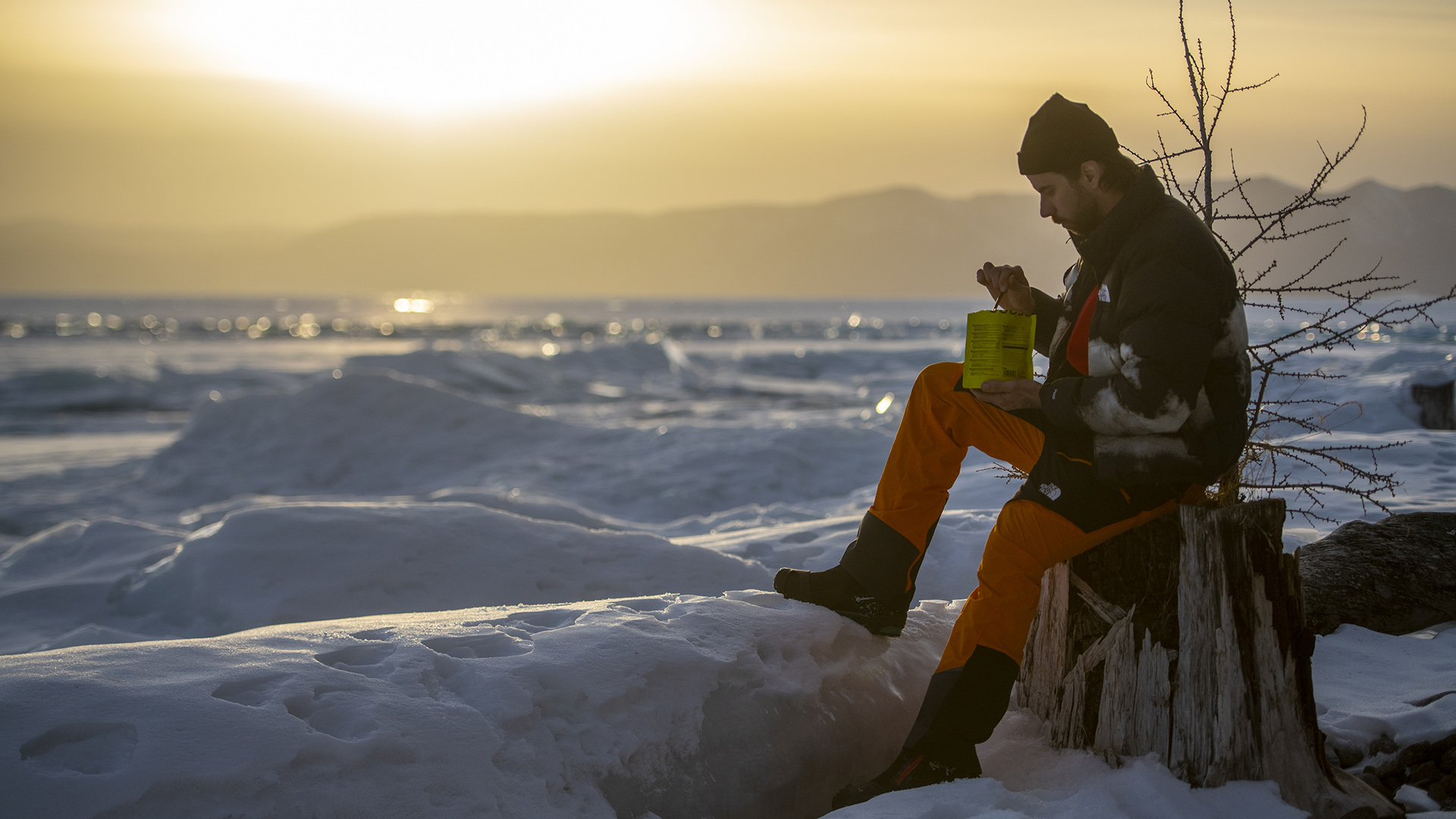
Sleeping in the gers and Mongolian camp life was a different experience. We spent more time in the camp than on the ice, and although before the event I was concerned about ‘sitting around’ all afternoon, in reality, it was a lot of fun to spend time chatting with others, cracking jokes, stretching, and what have you. Not to mention, sleeping in traditional Mongolian gers was something I wouldn’t have experienced otherwise, should I not have travelled with Rat Race.
Gers are simple constructions that Mongolian shepherds use all year round; they are round tents made of wooden support poles and covered with comparatively thick material such as animal skin or felt. Our gers had little wood burners in the middle, with five people sleeping in each tent. There was a hole at the top, so the chimney could poke through and to ensure condensation was kept to the minimum inside the ger.
Initially, I was slightly apprehensive about sleeping in temporary tents at minus -20ºC, even with my super-duper Thermarest sleeping bag at my disposal. One night, my feet literally poked out of the tent into the crisp Mongolian night! Of course, there was no need to be concerned. The gers were more than warm enough, thanks to our Mongolian support team keeping the fire alive throughout the night and the five people setup mentioned earlier.
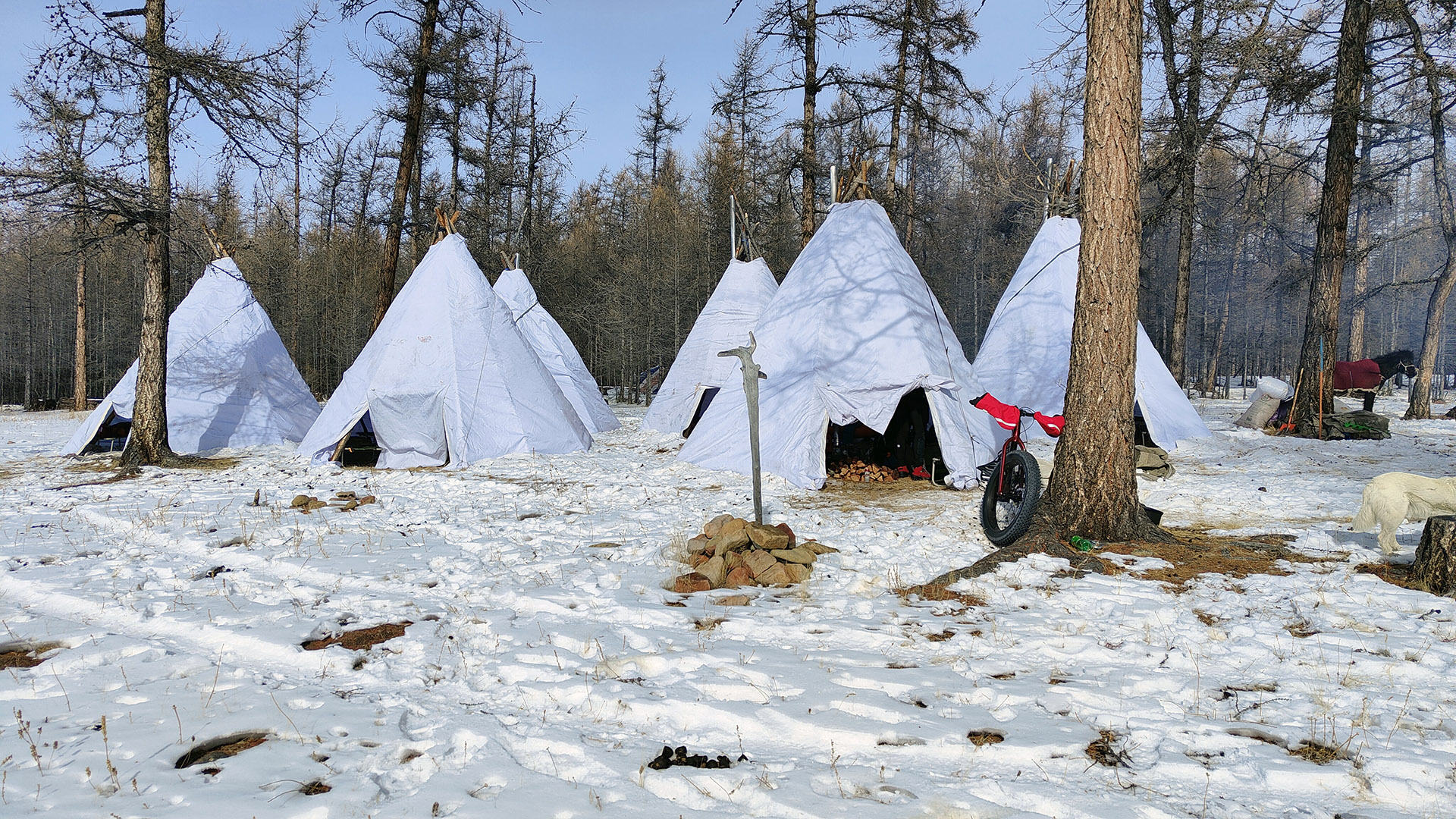
Of course, sleeping was just one of the many things we did at the camp. We had loads of time to talk and talked we did. The Mongol 100 team was comparatively small (around 20 people), but they were the most eclectic bunch. They all had different motivations to be there and were always happy to share their stories (and snacks/drinks); I relished knowing more about everyone each day. I even learned general life skills, such as how long it takes to spot a 'bad apple' in a group (apparently, less than five minutes).
We also had plenty of time to soak in the wilderness and enjoy everything that comes with wild camping, including (but not limited to) roaming the forest around the camp (one day, we found what looked like an abandoned temporary shed and animal pen), walking around the ice and seeing it crack under our feet, drinking water directly from the lake via the hole our Mongolian helpers dug near the camp, and sitting around the campfire. Even now, weeks later, my down jacket and duffel bag still smell smokey (which is great).
I survived
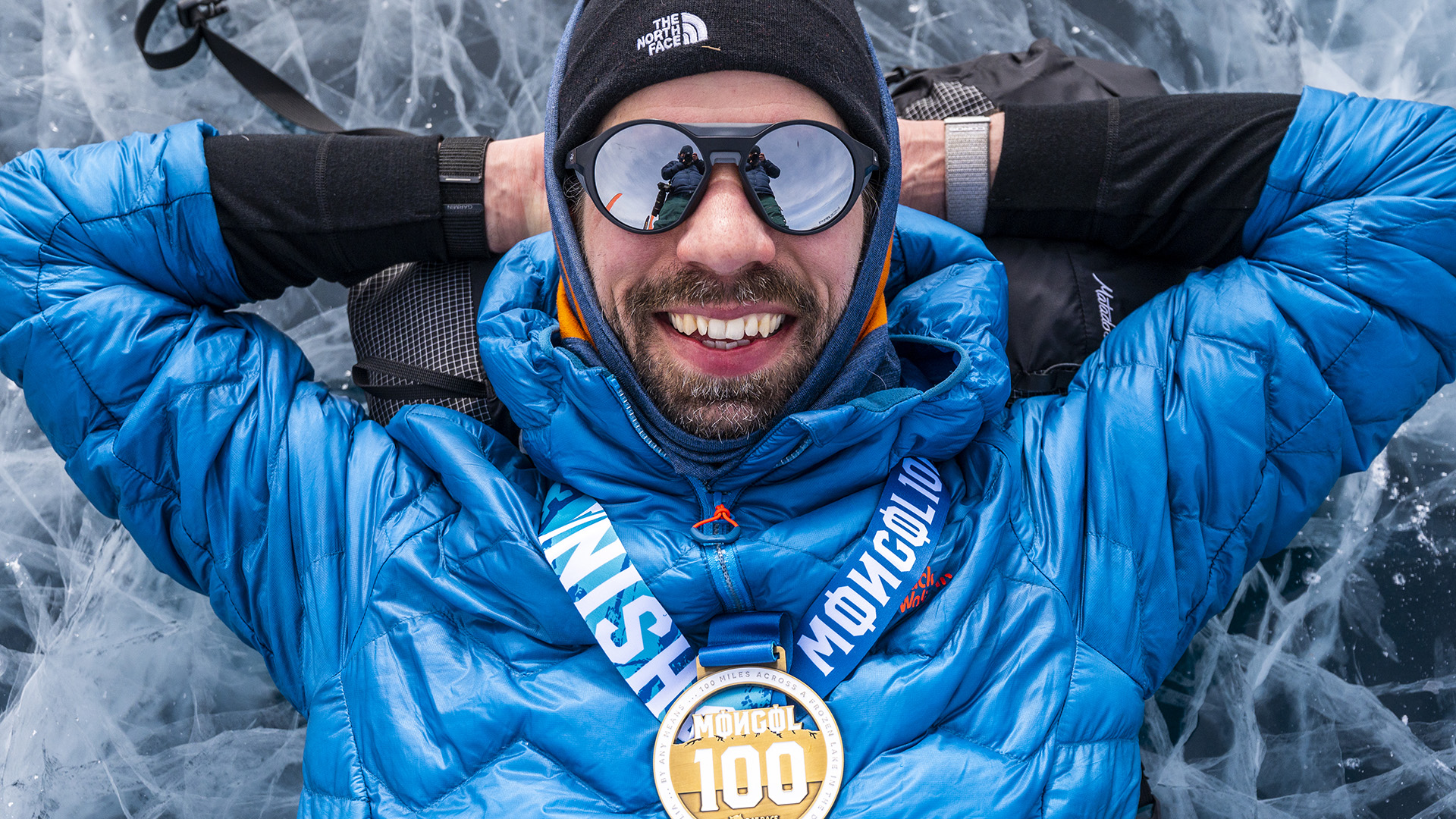
It wouldn't be fair to talk about the Mongol 100 as a race; it isn't. It's a challenge, but not like the Barkley marathon. Everyone can tailor it to their liking and fitness level, and no one is there to beat their PBs. My favourite moment from the whole trip was the finish line. Apart from my finish described above, how finishers were greeted succinctly summarises Rat Race's mentality.
As soon as you passed the flags, we were given a medal, beers and snacks. But instead of making our way back to the camp, we lingered around, waiting for others to finish. Everyone was keen to know who'd come next, and we cheered for every single person arriving. Everyone was given a hug and a smile, and we were all happy for each other. Not something I had experienced in any race before.
Not only did I survive the Mongol 100, but I feel like a more experienced and well-rounded person overall. I proved to myself that I could run an ultra in extreme conditions, which is a very satisfying feeling; I also learned that you could genuinely be happy for the achievement of others as long as you're in an environment that encourages such behaviour.
The bonds I created will probably stay with me for much longer than my recollection of the events. In fact, some of the Mongol 100 participants plan to tackle another Rat Race event next year, which isn't unusual, as I found out. Going through an experience such as this will inevitably bring you closer to others, no matter how different they are. And you'll be happy about it.
[Leading adventure company Rat Race offers a range of global bucket list trips that cater to everyone's capabilities, whether you're a first-time adventurer or an experienced explorer. From traversing the entirety of a frozen lake from north to south in Outer Mongolia by foot, skates or bike to a journey across the Namib Desert to reach the most famous shipwreck on earth, you can find out more about Rat Race's exhilarating adventures at Rat Race.]

Matt Kollat is a journalist and content creator who works for T3.com and its magazine counterpart as an Active Editor. His areas of expertise include wearables, drones, fitness equipment, nutrition and outdoor gear. He joined T3 in 2019. His byline appears in several publications, including Techradar and Fit&Well, and more. Matt also collaborated with other content creators (e.g. Garage Gym Reviews) and judged many awards, such as the European Specialist Sports Nutrition Alliance's ESSNawards. When he isn't working out, running or cycling, you'll find him roaming the countryside and trying out new podcasting and content creation equipment.

